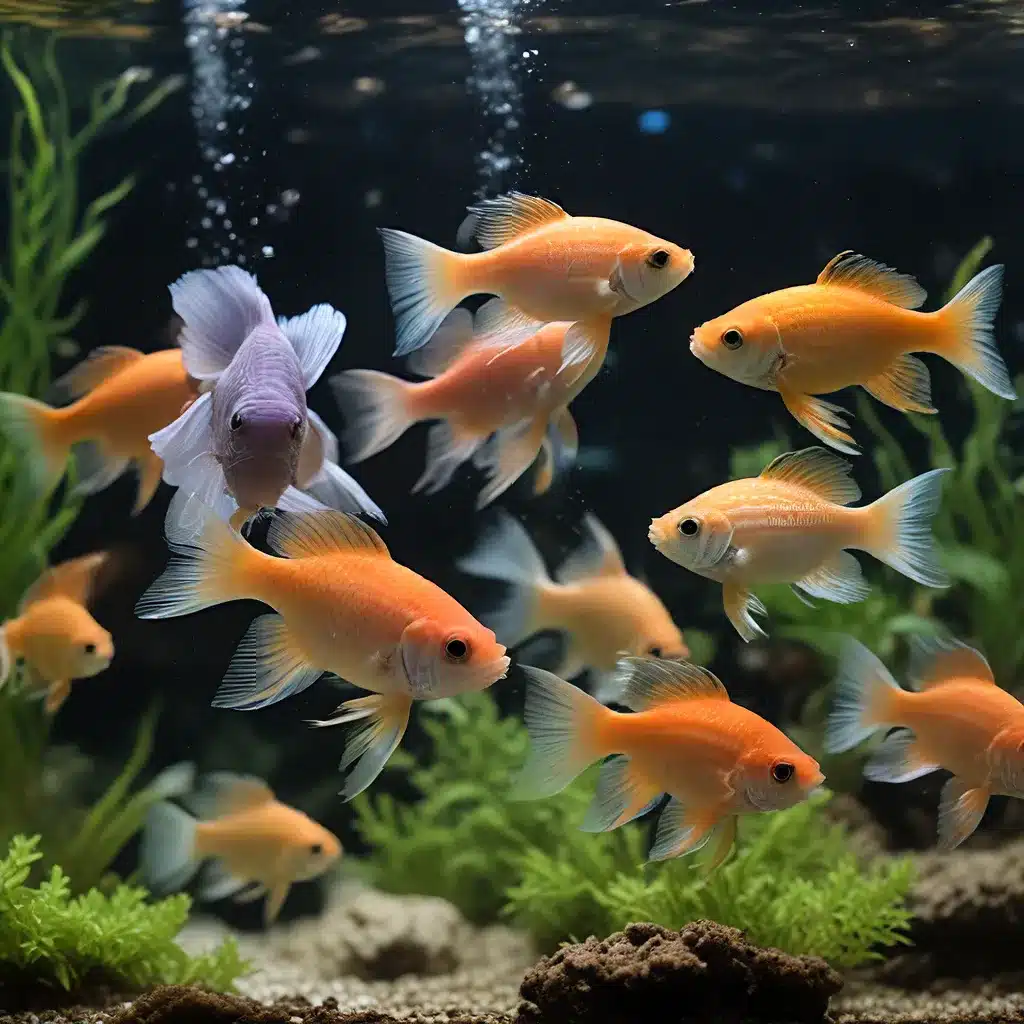
Understanding Fish Behavior: A Key to Aquarium Success
Observing the intricate behaviors and social interactions of aquarium fish is a captivating experience for any aquarist. Beyond simply watching these underwater creatures swim gracefully, understanding their instincts, body language, and social dynamics can unlock the secrets to creating a harmonious and thriving aquarium environment. By delving into the fascinating world of fish behavior, aquarists can learn to anticipate, manage, and even harness these natural tendencies to ensure the well-being and long-term success of their aquatic inhabitants.
Schooling and Shoaling Behavior: One of the most distinct behavioral patterns observed in many fish species is their tendency to form schools or shoals. While these terms are often used interchangeably, they actually refer to distinct social behaviors. Schooling fish, such as tetras and rasboras, swim in tightly coordinated, synchronized groups, providing safety in numbers and confusing potential predators. Shoaling fish, on the other hand, like guppies and mollies, stay together for social reasons but do not necessarily swim in a synchronized manner. Understanding these differences can help aquarists create tank setups and social environments that cater to the specific needs of their fish.
Territorial Behavior and Aquascaping Considerations
Territorial behavior is particularly common among certain fish species, especially in the cichlid family. Signs of territoriality can include chasing, nipping, and displays of enlarged fins to appear larger. These behaviors are often driven by the need to establish and defend specific areas within the tank, which may be related to breeding, feeding, or other essential activities. To effectively manage territorial disputes and promote a harmonious tank environment, aquarists should ensure their aquarium is equipped with ample hiding spots and visual barriers, such as strategically placed aquascaping elements.
Crafting an aquascape that provides a balance of open swimming areas and sheltered zones can go a long way in breaking up territories and reducing overall aggression among the inhabitants. By considering the natural behaviors and social dynamics of their fish, aquarists can design captivating and functional aquascapes that cater to the specific needs of their aquatic community.
Breeding Behavior and Fry Care
Breeding behaviors vary widely among different fish species, but often involve complex courtship rituals, nest-building, and the protection of offspring. For example, male betta fish are renowned for their elaborate bubble nest construction on the water’s surface, while mouthbrooding cichlids shield their young in their mouths. Recognizing these distinct breeding behaviors can help aquarists prepare for the arrival of fry (baby fish) and ensure they provide the necessary care and environment for the successful development of the next generation.
Observing and understanding the signs of breeding activity can also aid in preventing unnecessary stress on the fish, which can be detrimental to their overall health and well-being. By creating an aquarium setup that caters to the specific breeding requirements of the fish, aquarists can foster a thriving and self-sustaining aquatic ecosystem.
Feeding Behavior and Water Quality Management
Aquarium fish’s feeding behavior can provide valuable insights into their overall health and the social dynamics within the tank. Healthy feeding behavior typically involves eager competition for food and a willingness to consume the provided diet. In contrast, a lack of interest in food or hesitation during feeding time can be a sign of stress, illness, or an underlying issue in the aquarium environment.
Observing feeding behavior can also help aquarists ensure that all inhabitants are getting their fair share of nutrients, preventing any one fish from monopolizing the food source. This attentiveness to feeding dynamics is crucial, as it can directly impact the water quality and the overall well-being of the aquatic community.
Maintaining optimal water parameters, such as pH, temperature, and dissolved oxygen levels, is essential for supporting healthy fish behavior and preventing stress-related issues. Regular water testing, monitoring, and proactive maintenance are key to creating a thriving and harmonious aquarium ecosystem.
Addressing Stress and Promoting Healthy Behaviors
Fish do not have eyelids, so they rest with their eyes open, often finding quiet spots in the tank, such as among plants or decorations, to take periodic breaks. Understanding the resting and “sleeping” habits of aquarium fish can help aquarists create a more natural and stress-free environment.
Stress is a significant factor in fish health and can be caused by a variety of environmental factors, including poor water quality, incompatible tank mates, or an inadequate habitat. Common signs of stress in fish include erratic swimming, loss of color, hiding behavior, and rapid gill movement. To reduce stress and promote healthy behaviors, aquarists must maintain optimal water parameters, provide a suitable habitat with adequate hiding spots, and ensure peaceful tank dynamics among the inhabitants.
Regular monitoring, water changes, and proactive problem-solving are crucial for preventing stress-related issues and fostering a thriving aquarium community. By understanding and addressing the underlying causes of stress, aquarists can create an environment that allows their fish to exhibit natural, healthy behaviors and thrive.
Exploring the Wonders of Aquarium Fish Behavior
The captivating world of aquarium fish behavior is a treasure trove of insights and opportunities for aquarists to enhance the health, harmony, and aesthetic appeal of their aquatic setups. By delving into the intricacies of schooling, territoriality, breeding, feeding, and resting behaviors, aquarists can unlock the keys to creating a vibrant and self-sustaining aquarium ecosystem.
Through regular observation, diligent maintenance, and a deep understanding of fish needs, aquarists can foster an environment where their aquatic inhabitants can thrive and showcase their natural behaviors. Whether you’re a seasoned hobbyist or a newcomer to the world of aquariums, exploring the secrets of fish behavior is a rewarding journey that will undoubtedly enrich your aquatic adventures.
King Aquarium invites you to dive deeper into the fascinating realm of aquarium fish behavior and discover the pathways to aquarium success. By combining expert insights, practical advice, and a passion for aquatic life, you can create an enchanting underwater oasis that captivates the senses and nurtures the well-being of your finned companions.

